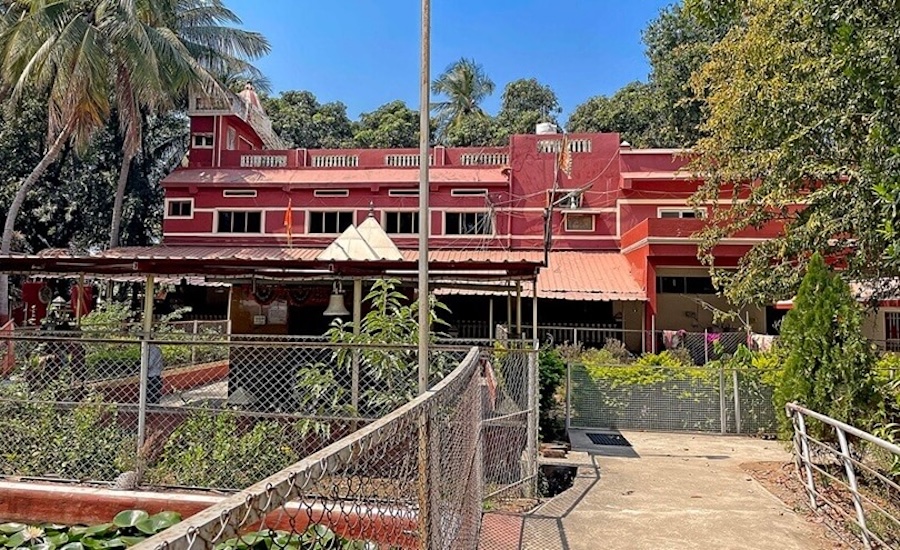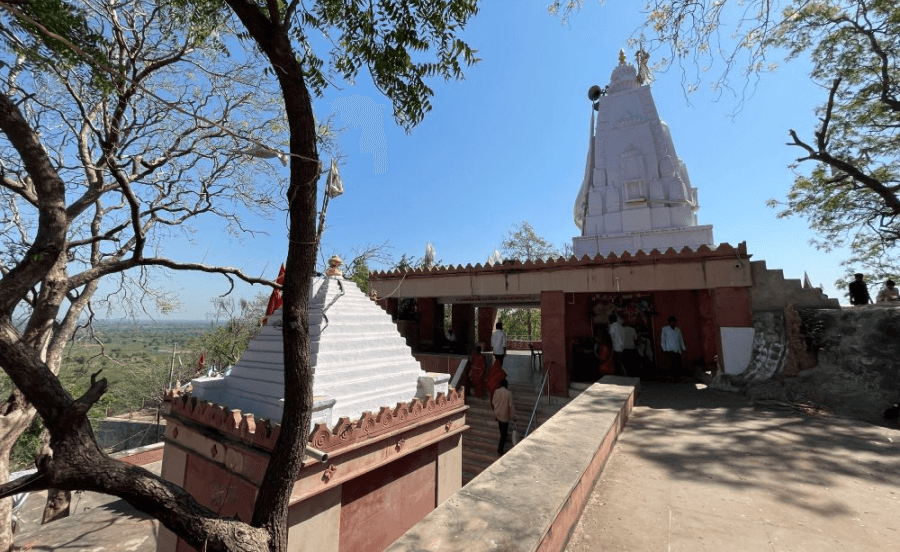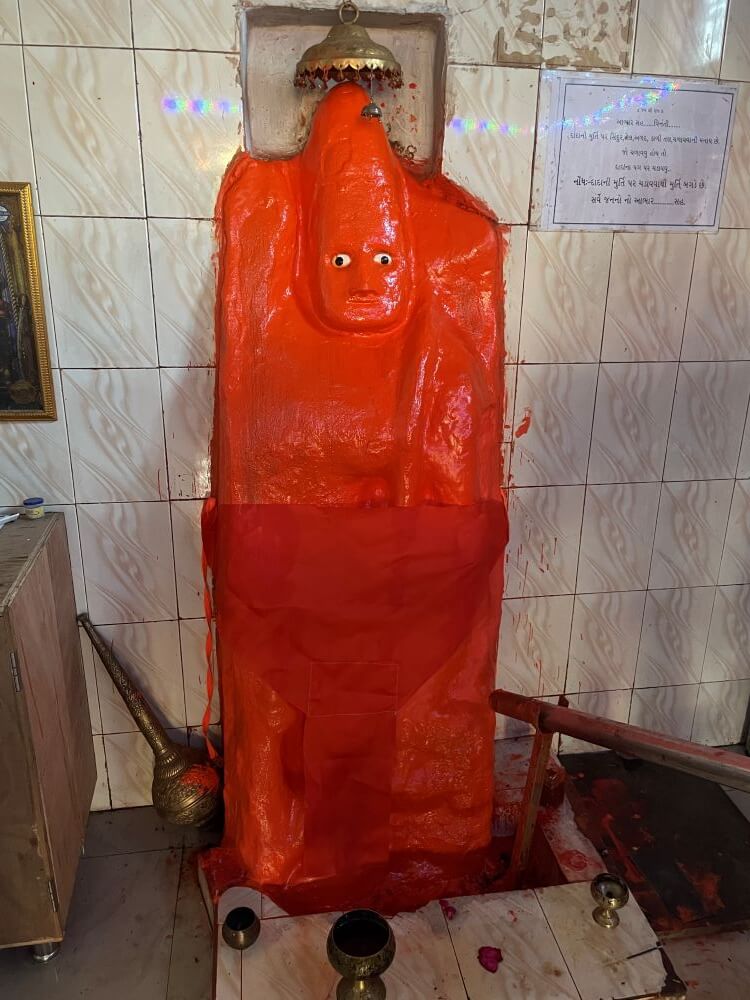
There are many temples of deities known for fulfilling the wishes of devotees in various places. However, at Umba Hanuman in Rojghat-Tilpada, located in the Dediapada taluka of Gujarat, devotees believe that the deity indicates whether they will succeed in their endeavors. Devotees ask the idol if their work will be successful. If it is to be completed, they can lift the idol of Hanuman easily; otherwise, no matter how much effort they exert, the idol remains immovable.
This belief draws hundreds of devotees from various places to the temple daily to seek the verdict of Maruti Raya (Hanuman). The exact age of this temple is not known. The idol of Hanuman is situated under a tree referred to locally as ‘Umba’. According to legend, many years ago, a naga sadhu (a wandering ascetic) was meditating under this tree and was a devotee of Hanuman. Due to his rigorous penance, he received the blessings of Hanuman. At his request, Hanuman began granting responses to the devotees.
The temple is located about 100 km from Surat, near Tilpada. It is situated in a forested area away from the village. The temple is set in an area with a large courtyard surrounded by dense foliage and a river flowing on one side. 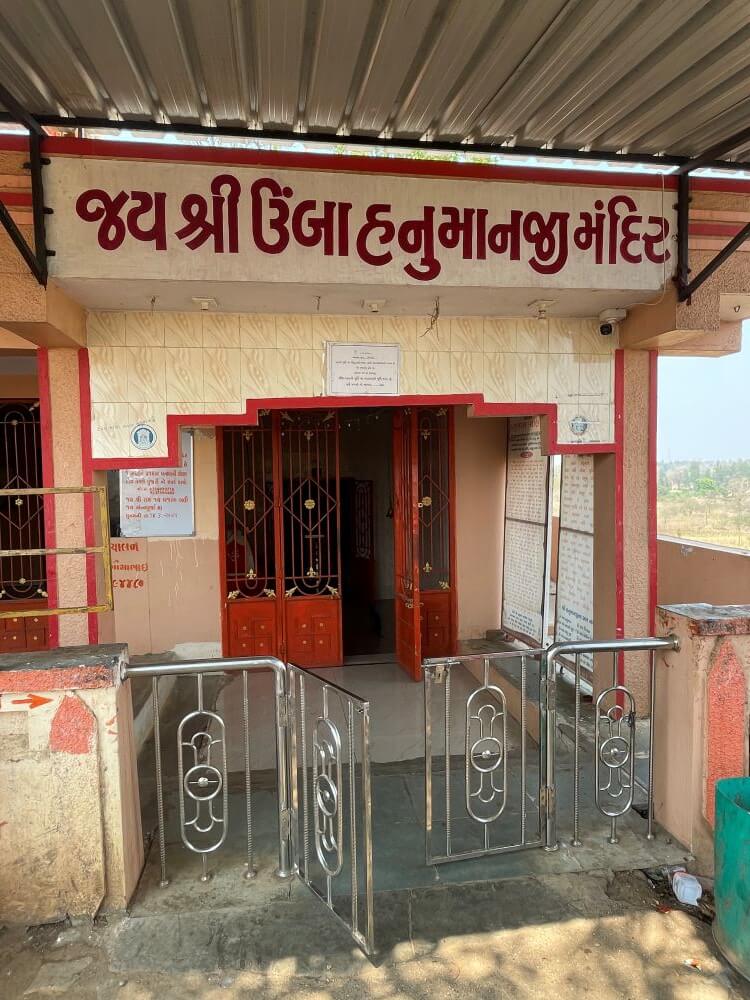 One side of the courtyard features the temple structure. In addition to the Umba Hanuman temple, there are also temples dedicated to Shri Ram and Umbaeshwar Mahadev. All three temples are modern constructions with distinct shikharas (spires). The shikhara of Umba Hanuman temple is pyramid-shaped and tall, while the other two temples have shorter spires. There is a single half-mandap style hall connecting these temples.
One side of the courtyard features the temple structure. In addition to the Umba Hanuman temple, there are also temples dedicated to Shri Ram and Umbaeshwar Mahadev. All three temples are modern constructions with distinct shikharas (spires). The shikhara of Umba Hanuman temple is pyramid-shaped and tall, while the other two temples have shorter spires. There is a single half-mandap style hall connecting these temples.
The structure of the Umba Hanuman temple consists of a hall (Mukhamandap) and a sanctum (Garbha Griha). The temple is adorned with marble tiles throughout. At the entrance of the sanctum, there is an idol of Ganesh at the lintel (lalatbimba) position. Leaning against the back wall of the sanctum is a stone idol of Hanuman with a vermilion mark, standing on a marble pedestal. A crown is carved on the head of this idol, while other features are somewhat indistinct. Beside this idol lies a large brass mace (gada). Additionally, there is a small marble idol of Panchmukhi Hanuman on a wooden shelf nearby. This idol features Hanuman’s face in the center with faces of Narasimha, Garuda, Varaha and Hayagriva on either side. A large mace made of brass is also placed behind it along with a large conch shell at its feet.
Adjacent to the Umba Hanuman temple is Shri Ram’s temple. Near the entrance to its sanctum, there is Ganesh’s idol on the left wall and Hanuman’s on the right wall. 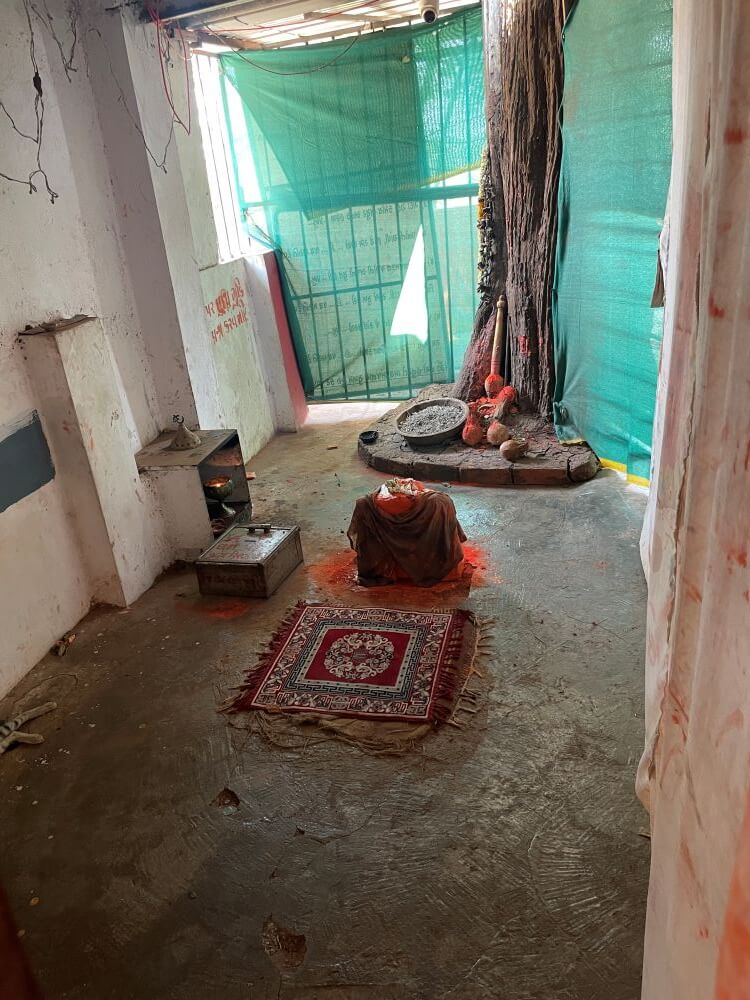 Inside the sanctum sits a tall marble pedestal containing glass-enclosed marble idols adorned with garments and ornaments representing Shri Ram, Lakshman and Seeta. To their left is a small idol of Hanuman paying homage to them. These idols were consecrated on August 4, 2021. Both temples face southward and have circumambulation (pradakshina) paths accessible from the hall.
Inside the sanctum sits a tall marble pedestal containing glass-enclosed marble idols adorned with garments and ornaments representing Shri Ram, Lakshman and Seeta. To their left is a small idol of Hanuman paying homage to them. These idols were consecrated on August 4, 2021. Both temples face southward and have circumambulation (pradakshina) paths accessible from the hall.
Next to these temples is an east-facing temple dedicated to Umbaeshwar Mahadev. On its facade wall near the entrance door, there are elegant idols of Hanuman on the left and Ganesh on the right. Upon entering through the door, one immediately sees a small pedestal with a marble idol of Nandi and a tortoise in front of it. In the center of the sanctum is a shivpind dedicated to Umbaeshwar Mahadev. Here lies a circular marble pedestal with a stone lingam over which a serpent holds its canopy. Abhisheka (ritual bathing) occurs over this pind from an overhead vessel. Above this vessel is a silver canopy. Behind the Shivling on the wall is an idol of Parvati Mata flanked by images of Shiv, Parvati and Ganesh.
In the vicinity of Umba Hanuman Temple lies an ancient Umba tree under which stands an original vermilion-marked idol of Maruti Raya along with an original ancient Shivling dedicated to Umbaeshwar Mahadev. Nearby, on a raised platform, is a small black stone idol of Bhairavnath.  Devotees ask questions regarding their intended work’s success at this original idol of Maruti on Saturdays, Sundays and Tuesdays between 7 AM and 7 PM. They can ask as many questions as they wish; however, it is mandatory to recite Hanuman Chalisa before each question. A plaque inscribed with Hanuman Chalisa is placed near this idol. Since Hanuman is considered a Brahmachari (celibate), women are prohibited from touching this idol.
Devotees ask questions regarding their intended work’s success at this original idol of Maruti on Saturdays, Sundays and Tuesdays between 7 AM and 7 PM. They can ask as many questions as they wish; however, it is mandatory to recite Hanuman Chalisa before each question. A plaque inscribed with Hanuman Chalisa is placed near this idol. Since Hanuman is considered a Brahmachari (celibate), women are prohibited from touching this idol.
In the temple complex, there is an orange-colored idol where devotees break coconuts as offerings. There is also a yajna kund (sacrificial altar) in this area where Hanuman Jayanti is celebrated with great enthusiasm. A full moon feast (Poonam Bhandara) occurs every month during Purnima (full moon night). Devotees can also perform homa (fire rituals) here along with celebrating Mahashivratri and Ram Navami festivals with great devotion.
